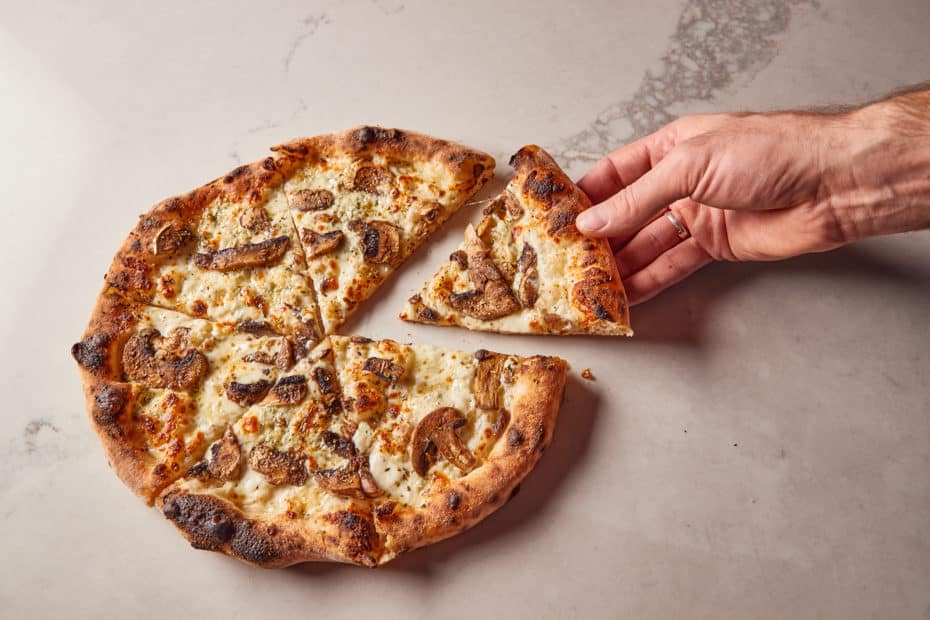Just as James Bond required his martinis to be “shaken… not stirred,” true aficionados of Neapolitan pizza prefer their crust to be “charred… not burned.” But what does that mean, look like and taste like? When you see those “leopard spots” on your pizza, are you supposed to think it’s been left too long in the oven?
Not at all. It’s been in the oven for precisely the right amount of time. The charring is a byproduct of baking the pie in a blazing-hot oven, and in fact it adds a tasty, lightly bitter flavor that distinguishes Neapolitan pizzas from the rest and complements the pie’s uncooked tomato sauce… perfectly!
Blazing hot ovens
Pizza is traditionally baked in a wood-fired oven, which gets extremely hot (around 800 degrees) and cooks extremely fast (usually in about two-three minutes). That charring you experience on your pizza? It’s a byproduct of that high heat.
The pattern occurs when the reflected heat from the ceiling of the pizza oven is hitting the raised edge of the pizza, known in Italian as the cornicione, and also when the heat from the bottom of the oven is doing the same to the underside of the crust. Obviously, the parts of the crust closest to the heat are the ones that get charred.
Charring is a chemical process; the oven’s high heat has essentially started turning the pizza dough into coal. The process that begins with charring would end with burning if we left the pizzas in the oven any longer: we take them out while the process is still incomplete and when only the surface of the crust is affected.
The irregularity of the spots is caused by bubbles from the fermentation process and unevenness in the edge, so certain spots char more quickly than the rest of the edge, creating the leopard pattern you often see in Neapolitan pizzas.
The perfect pizza
All this isn’t to say that it’s impossible to burn a pizza! It’s a fine line between charring and burning—thanks to, again, the blazing-hot heat of our ovens. Producing the perfect pizza takes patience, skill, and an almost innate sense of timing and of understanding the oven. But when the pizza is just right, eating this pizza is an amazing experience. As you bite into the charred bits of the crust, they shatter—and scatter onto the pizza’s toppings, a blend of tomato, cheese, and whatever else your particular pizza choice calls for. The acrid flavor of the char plays up the other sweeter flavors of uncooked tomato sauch for a perfect mouthful.
Staying In?
If you’ve picked up a pizza kit from our Pizzeria Local pantry, it includes directions on how to make our pizza dough (using just the four ingredients we believe to be the only ones you need and that give the best results). So the obvious question is—can you approximate charring on your home-cooked pizzas?
The real challenge will be your oven. A Neapolitan pizza should be baked between 800 and 900 degrees Fahrenheit, at which temperature you’ll get perfectly charred pizza in 60-90 seconds. The problem is that most non-industrial ovens just don’t get that hot, so you’ll need to use a pizza stone or a pizza steel to increase the temperature. Choose a stone or steel that’s reasonably thick, make sure it’s preheated before putting your pie on, and you’ll have a better chance of charring.
Enjoy!
Wherever you choose to eat, at home or at a Pizzeria Locale, remember that Neapolitan pizza is best enjoyed as soon as it comes out of the oven. Remember that the crispy charring you see on the edges of your pizza is actually a hallmark of the Neapolitan style, and… buon appetito!



